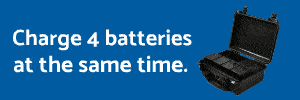Hi everyone! I'm a trucker with an Inspire 2. I'm a hobbyist cinematographer. Here I present footage I shot during a recent long haul I had from Nevada to South Carolina. I have some tips I've realized, posted at the bottom for those who shoot H.264 or H.265 8-bit codecs like me.
Cameras I used for this? DJI Inspire 2 and X5S for aerials along with the decent run-n-gun Panasonic 14-42mm lens as I typically only shoot during daylight hours (so the slow speed of the lens being maximum f/3.5 aperture doesn't bother me much). But what about all the non aerial shots?
Four GoPro Hero 6 Blacks to capture many angles. Two are stock. The other two, I swap between and focus the 19mm (35mm equivalent) and the 47mm lenses Peau Productions website sells. 4K, no distortion from those lenses. They are indispensable to me for capturing "DSLR like" footage FAST in good lighting conditions. GoPros have a "Native" white balance setting that, once graded, produces beautiful colors in my opinion; I always use Native White Balance. I have the ND filters for GoPros too but don't use them when using electronic image stabilization, like when mounted outside. EIS creates artifacts with low shutter speed, it bakes in the electronic shifts in the frame. No big deal!
For the Inspire 2 camera settings, I do full manual. I alternate between DLOG and Cinelike profiles. I edit contrast based on the scene or camera move (to fit within the histogram), sharpness usually at -2 or -3 (to add it in post), and saturation at -1 if strong vibrant colors are to be expected (to avoid clipping in saturation), otherwise saturation at 0, and manual white balance. I typically shoot 4096x2160p at 30fps in H.265 with the 2.35 aspect ratio overlay to help with my composition. If necessary I will animate crops to fix an uneven horizon in post.
TIPS: When using the log / flat type color profiles, it's critical to avoid creating too flat a video! If your histogram is only HALF taken up because you're shooting in DLOG, you're effectively giving only 128 levels of color (per red green and blue) to your final footage ... meaning you're shooting 7 bit color effectively, then expanding it in post when grading to match an 8 bit timeline, losing details in color gradations and increasing the chances of color banding artifacts. Your graded shot will have far less color depth than it should. Try it: shoot a video in DLOG with roughly half your histogram or waveform showing action, then another in Cinelike (or DLOG) showing the same scene but this time with most the histogram showing usage. Grade the other shot to match. Now save frames and check details side by side with a tool such as FastStone Image Viewer. The universe provides no free lunch; the flatter your image, by definition, you're losing color depth / bit depth! So be careful. Only use DLOG when the scene or shot demands it as such (like during a sunset or if you want to do a dynamic type of camera move that will experience large dynamic range and you want your exposure locked), if retaining maximum color depth is your goal. Those shooting in ProRes (I believe it is 10 bit) and especially DNG RAW don't need to worry about this loss of color depth when shooting a flat video! The lesson is: don't make your footage any flatter than it needs to be if shooting with an 8-bit codec, just enough to cover the highs and lows of the scene (I often use Cinelike and may even up contrast by 1 or 2 if the image is too flat).
I've been flying for over 2 years (as a hobbyist, I will get my 107 soon) and started with the Phantom 3 Pro then onto the Inspire 1 and Zenmuse Z3 zoom camera. DLOG was never the best option for 8 bit video (log profiles are more ideally suited to 10 bit video and better), but the extra dynamic range is definitely useful to avoid clipping your highlights. However, people (including myself, I was guilty of this too until I realized this) must avoid going over board with the "flat video" look with 8 bit recordings because the flatter your image, the less actual bit depth you will have. Find the balance. Ideally your histogram should be nearly full with just a tiny amount of flatness at the lows and highs. Same idea for waveform, that's just a different way to look at things, but since 8 bit video is only 256 levels of red, 256 of green, and 256 of blue, you must use as much of that bit depth as you can (if you want the most color gradations and richness in your final video) while still recording maximum dynamic range.
Edited and color graded in Vegas Pro 15. Enjoy. If you have any questions, feel free to ask!
Last edited:






